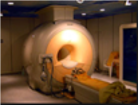Climate Change Initiative
The NPSS Climate Change Initiative, created by the NPSS AdCom in 2023, aims to identify possible contributions by the Nuclear and Plasma Sciences community to solving the climate change problem. A newly formed core team identified possible contributions and actions as listed below.
Promoting Solutions to Climate Change
While there are undoubtedly natural forces at work that contribute to the changing climate, there is no doubt now that humans are accelerating these changes by releasing excessive amounts of greenhouse gases in the atmosphere which induce a steady growth of the planet’s temperature.
Before we can reverse this trend, slowing its growth is the first goal. For this to happen there must be a massive change in human behavior, including the use of energy sources that do not produce carbon dioxide or other greenhouse gases. Among these changes are the new generation of nuclear and plasma technical solutions for energy, monitoring and storage of spent fuel, waste management, simulations, sustainable societal challenges and more.
NPSS Assets Relevant to Climate Change
Nuclear Science and Engineering :
Includes radiation detection and monitoring instrumentation, radiation effects, nuclear biomedical applications, particle accelerators, and instrumentation for nuclear power generation)
- Vacuum
- Surfaces
- Magnets
- Cooling
- Superconductors
- Electronics
- Sensors (gas, solid state, scintillators)
- Integration
- Support structures
Instrumentation for Nuclear Power Generation
- Simulation
- Control
- Monitoring
Plasma Science and Engineering:
Includes plasma dynamics, thermonuclear fusion, plasma sources, relativistic electron beams, laser plasma interactions, diagnostics, and solid state plasma. Selective enhancement of chemical reactions (pollutant control, selectivity in chemical conversion)
- Simulations
- Infrastructures
- Power distribution
- Large Underground installations
- Vacuum
- Surfaces
- Magnets
- Cooling
- Superconductors
Plasma Sources and Laser-Plasma interactions:
- Cavities
- Magnets
- Surface Coating
Useful Links:



